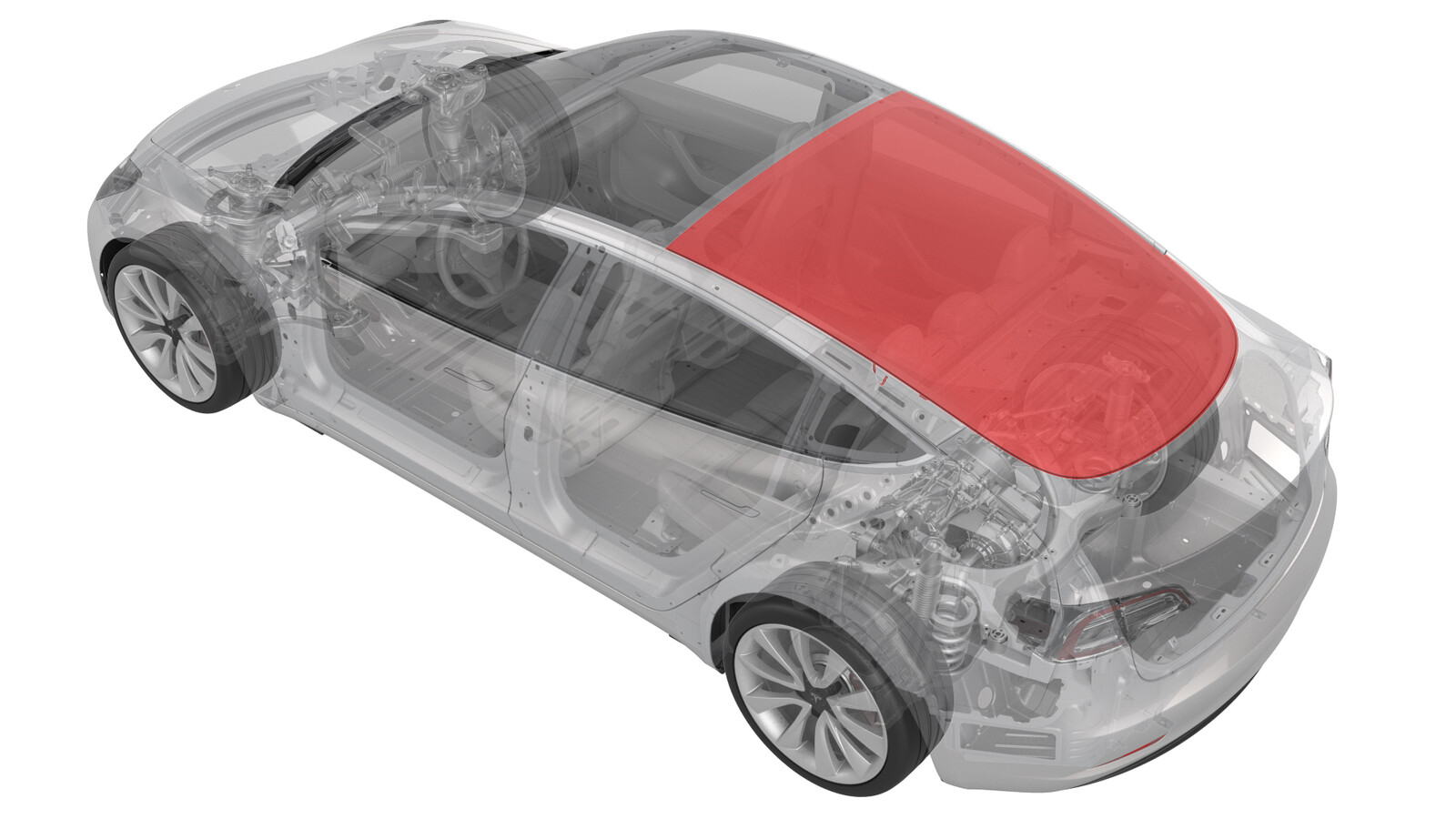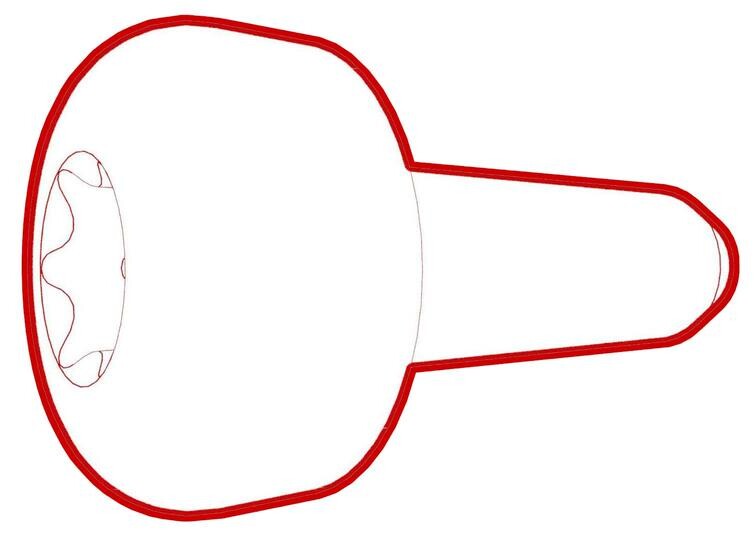Glass - Backlight (Heat Pump Model) (Remove and Replace)
 Correction code
10204112
1.02
NOTE: Unless otherwise explicitly
stated in the procedure, the above correction code and FRT reflect all of the work
required to perform this procedure, including the linked procedures. Do not stack correction codes unless
explicitly told to do so.
NOTE: See Flat Rate
Times to learn more about FRTs and how they are created. To provide feedback on
FRT values, email ServiceManualFeedback@tesla.com.
NOTE: See Personal Protection to make sure wearing proper PPE when
performing the below procedure. See Ergonomic Precautions for safe and healthy working practices.
Correction code
10204112
1.02
NOTE: Unless otherwise explicitly
stated in the procedure, the above correction code and FRT reflect all of the work
required to perform this procedure, including the linked procedures. Do not stack correction codes unless
explicitly told to do so.
NOTE: See Flat Rate
Times to learn more about FRTs and how they are created. To provide feedback on
FRT values, email ServiceManualFeedback@tesla.com.
NOTE: See Personal Protection to make sure wearing proper PPE when
performing the below procedure. See Ergonomic Precautions for safe and healthy working practices.
- 2024-12-10: Added new caution about Pre-Installation Glass Inspection service requirements.
- 2023-08-04: Add step the check the gap and flushness by referring to CVIS specification.
- Ball Peen Hammer: 115198-00-A
- Equalizer Python:1080596-00-A
- Portable Bench :1054720-00-A
- Retractable Blade Knife :1082497-00-A
- Ballast Bags : 1145158-00-A
- Double Suction Cup Handles :1080599-00-A
- Gap and Flush Tool :1588904-00-A
- Caulk and Adhesive Gun :1080593-00-A
Remove
-
Open all doors and lower the windows.
NoteLatch the rear doors to prevent accidental closure.
- Move both front seats fully forward.
- Release the clips that attach the screw covers to the LH and RH rear coat hooks.
-
Remove the screws that attach the LH and RH rear coat hooks to the body.
- Remove the package tray trim. See Trim - Package Tray (Remove and Replace).
-
Release clips (x4) that attach the rear end of the headliner to the body.
NoteIf necessary, use an air bladder between the headliner and body for additional clearance.CAUTIONBe cautious not to damage the headliner.
-
Disconnect the backlight electrical harness connector from the antenna amplifier on the LH side C-pillar.
-
Disconnect the ground noise filter antenna connector on the LH side of the vehicle.
-
Release the LH side backlight busbar harness from the body.
-
Disconnect the 12V noise filter antenna connector on the RH side of the vehicle.
-
Release the RH side backlight busbar harness from the body.
-
Disconnect the backlight electrical harness connector from the tuner on the RH C-pillar.
- Open the trunk.
-
Remove and discard the rear seal from the backlight glass.
NoteThe new backlight glass comes with a new rear seal preinstalled.
-
Remove and discard the front seal from the backlight glass.
NoteThe new backlight glass comes with a new rear seal preinstalled.
- Apply masking tape to the exterior of the LH and RH roof pillars to protect the paint from damage.
- Insert the starter tool from inside the vehicle through the adhesive bead at the bottom area of the backlight glass.
- Insert the end of the nylon cord through the eye of the starter tool and pull it into the inside of the vehicle.
- Clean backlight glass roof with isopropyl alcohol.
- Positon the python cup assembly in the center of the backlight glass.
- Tie a blowline knot in the end of nylon cord and insert loop through the anchor tab on the python cup assembly.
- Install slither unit to the backlight glass.
-
Pull nylon cord from cup assembly around slither unit in the backlight glass.
NoteTurn the python cup assembly handle until the nylon cord is taught.
- Position the nylon cord around backlight glass from the outside of the vehicle.
- Insert the starter tool through the adhesive bead second time of the backlight glass.
- Pull the nylon cord into the backlight glass inside of the vehicle.
- Tie a stopper knot on the loose end of the nylon cord then insert into the notched slot on the python cup assembly.
-
Turn the handle bar on the python cup assembly so that reeling the nylon cord to cut the urethane securing backlight glass to body. Cut in a counter-clockwise motion over the top of the backlight glass to the lower side of the LH C-pillar. Return to the starting point in a clockwise motion and continue past the bottom of the backlight glass to the lower side of the LH C-pillar.
CAUTIONUse caution when working around the headliner area.
- Remove equalizer python from backlight glass.
- Remove the wire from the starter tool and remove the tool from the urethane.
- Attach suction cups to the LH and RH sides of the backlight glass.
- With an assistant, remove the backlight glass from the vehicle.
-
Use a razor blade to carefully remove the old urethane from the body.
- Use an IPA wipe to clean the urethane path.
Install
- Attach suction cups to the LH and RH sides of the new backlight glass.
- With an assistant, position the backlight glass onto the vehicle for a dry fit and note any locations where the net pads need to be adjusted.
- Check that the gap and flushness to all surrounding areas within CVIS specification and adjust as necessary.
-
If necessary, perform net pad adjustment.
- With an assistant, remove the backlight glass and set it on a stand.
- Clean the urethane path on the vehicle with an isopropyl alcohol (IPA) wipe. Allow the surface to dry before continuing to the next step.
-
Apply urethane primer:
- Apply urethhane primer to the vehicle along the urethane path and in areas that were damaged during removal of the backlight glass.
- Apply urethane primer to the backlight glass along the urethane path.
NoteAllow the primer to dry for at least 2 minutes before continuing. -
Apply urethane to the body following the original path.
NoteMake sure that the urethane bead has a triangular cross-section of approximate width 8 mm and height 13 mm.
- With an assistant, install the backlight glass to the vehicle.
- Check the gap and flush of the backlight glass to the body before fully seating the backlight glass.
- Close the trunk.
- Fully seat the backlight glass, check the gap and flush, and adjust as necessary.
-
Apply masking tape to attach the backlight glass to the body while the urethane cures.
NoteFor urethane curing time, follow urethane manufacturer's recommendations.
- Remove the suction cups from the backlight glass.
- Install the read end of the headliner to the body.
-
Connect the backlight electrical harness connector to the tuner on the RH C-pillar.
-
Attach the RH side backlight busbar harness to the body.
-
Connect the 12V noise filter antenna connector on the RH side of the vehicle.
-
Attach the LH side backlight busbar harness to the body.
-
Connect the ground noise filter antenna connector on the LH side of the vehicle.
-
Connect the backlight harness connector to the antenna amplifier.
- Install the package tray trim. See Trim - Package Tray (Remove and Replace).
-
Install the screws that attach the LH and RH rear coat hooks to the body.
 2.5 Nm (1.8 lbs-ft)
2.5 Nm (1.8 lbs-ft) - Fasten the clips that attach the screw covers to the LH and RH rear coat hooks.
-
If the vehicle has alerts pertaining to the rear defroster, perform these additional steps to re-enable the rear defroster.
- Connect a laptop with Toolbox 3 to the vehicle. See Toolbox (Connect and Disconnect).
- In Toolbox, click the Actions tab, type "Defrost" into the search field, click on PROC_VCRIGHT_REAR_DEFROST-RE-ENABLEvia Toolbox: (link)via Service Mode: Closures ➜ Windows ➜ Re-Enable, click Run, and allow the routine to complete.
- Disconnect the laptop from the vehicle. See Toolbox (Connect and Disconnect).
- Raise all windows and close all doors.
-
Remove the masking tape after the urethane has cured.
CAUTIONDo not drive the vehicle until the adhesive manufacturer’s recommended minimum drive-away time has passed. Dow Betaseal Express has a drive-away time of 1 hour minimum in temperatures of 0˚F (-18˚C) or warmer. If necessary, leave the tape applying pressure to the glass on the vehicle and advise the customer that they can remove it after 24 hours. Additionally, advise the customer that they should avoid high driving speeds and speed bumps for the next 24 hours.